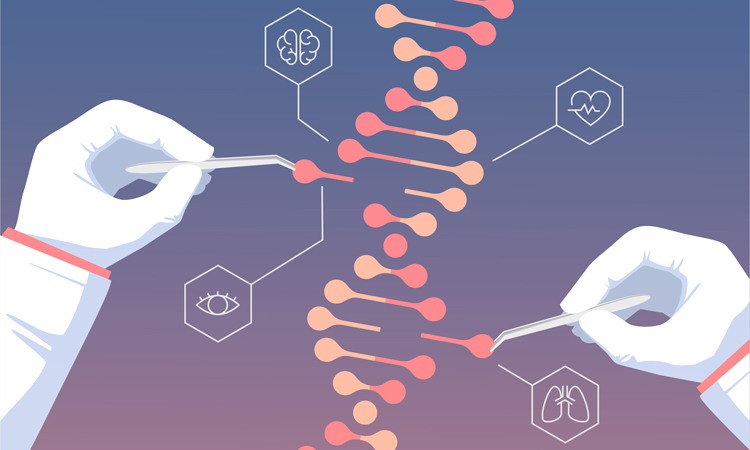First use of CRISPR to substitute genes for cancer treatment
Posted: 16 November 2022 | Izzy Wood (Drug Target Review) | No comments yet
US scientists, using CRISPR technology, removed specific genes in humans to allow the immune system to be more activated against cancer.


For the first time, University of California scientists, US, have used CRISPR technology to insert genes that allow immune cells to focus their attack on cancer cells, potentially leaving normal cells unharmed and increasing the effectiveness of immunotherapy.
The new approach, published in the journal Nature is a CRISPR technique that has been previously used in humans to remove specific genes to allow the immune system to be more activated against cancer.
In this new research, investigators at PACT Pharma reported using CRISPR to not only take out specific genes, but also to insert new ones in immune cells efficiently redirecting the immune cells to recognise mutations in the patient’s own cancer cells. When infused back to patients, these CRISPR-engineered immune cells preferentially traffic to the cancer and become the most represented immune cells there.
Finding an efficient way to isolate the genes and insert them back into immune cells to generate a personalised cell therapy to treat cancer is key to making the approach feasible on a large scale.
The research provides an efficient way to isolate these immune receptors from patient’s own blood using new technologies. After isolation, the immune receptors are used to redirect immune cells to recognize cancer using CRISPR gene editing.
Sixteen patients were treated with a variety of solid cancers. The patients had immune cells isolated from their blood based on their binding to capture reagents that displayed up to 350 mutations from the patient’s own cancer, for a total of over 5,000 mutations being targeted across 34 flavours of HLA subtypes of the immune system.
The genes of the immune receptors that allowed the immune cells to specifically recognised the cancer mutations were then sequenced, totalling 175 newly isolated cancer-specific immune receptors.
They were then inserted back into the patient’s own immune cells using a one-step CRISPR editing, which included the knock-out of the existing immune cell receptors and knock-in of the immune receptors that could redirect those cells to specifically recognise mutations in their cancer.
“This is a leap forward in developing a personalised treatment for cancer, where the isolation of immune receptors that specifically recognise mutations in the patient’s own cancer are used to treat the cancer” said Dr Antoni Ribas, UCLA Jonsson Comprehensive Cancer Centre. “The generation of a personalised cell treatment for cancer would not have been feasible without the newly developed ability to use the CRISPR technique to replace the immune receptors in clinical-grade cell preparations in a single step.
“This study demonstrates the feasibility of isolating and cloning multiple immune cell receptors recognising mutations in cancer cells, the simultaneous knock-out of the endogenous immune receptor and knock-in of the redirecting immune receptor using single-step, non-viral precision genome editing, the manufacturing of CRISPR engineered T cells at clinical grade, the safety of infusing up to three gene edited immune cell products and the ability of the gene edited immune cells to traffic to the patients’ tumours.”
Related topics
CRISPR, Genome Editing, Immunology, Immunotherapy
Related conditions
Cancer
Related organisations
California University
Related people
Dr Antoni Ribas








